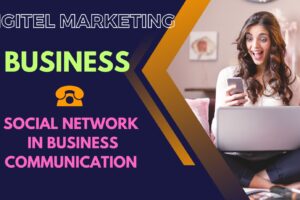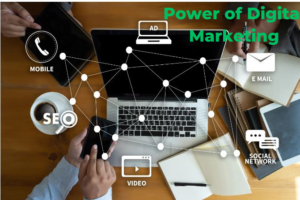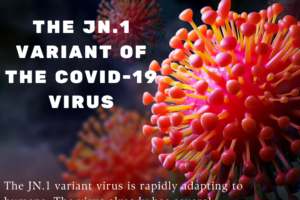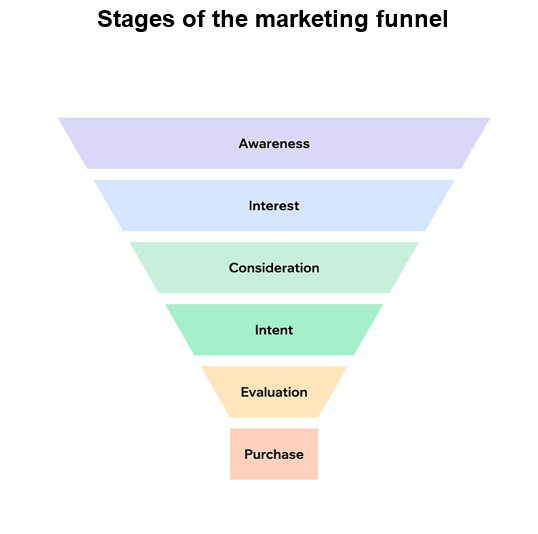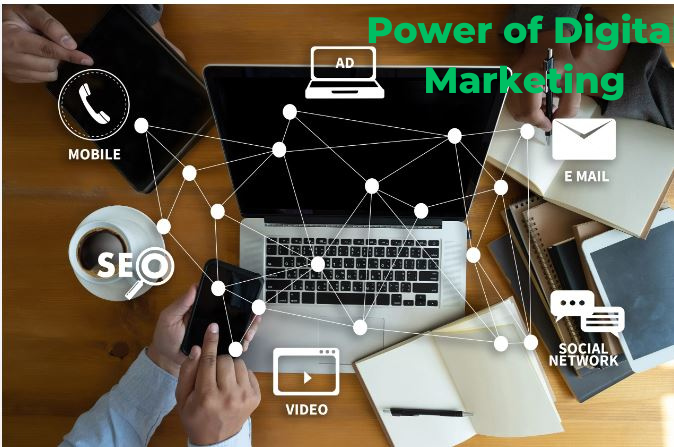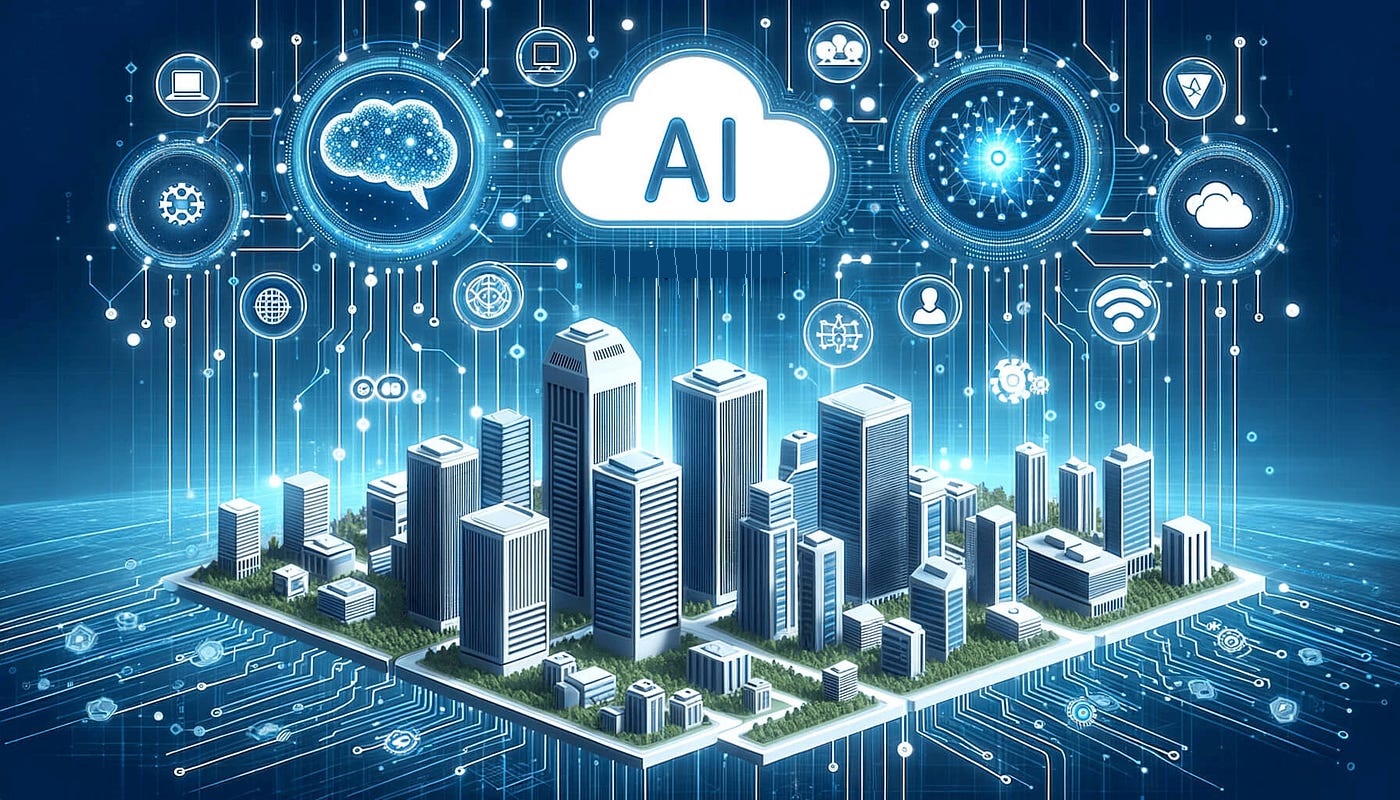Table of Contents
ToggleWhat is the Marketing Funnel?
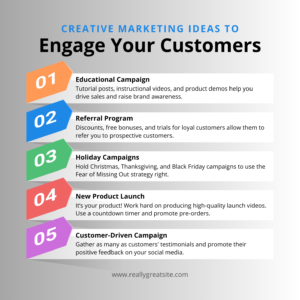
What is the Marketing Funnel
The Marketing Funnel or The Purchase Funnel, Is A Visual Representation Of All The Steps A Visitor Has To Go Through Before Purchasing A Product Or Service. Its Origins Date Back To 1910 When American Philosopher John Dewey Introduced The Five Stages Consumers Go Through Before, During And After Purchasing A Good Or Service.
This Buyer Decision Process Included The Following Stages: Problem/Need Recognition, Information Search, Evaluation Of Alternatives, Purchase Decision And Post-Purchase Behavior. Over Time, This Idea Evolved Into The Contemporary Marketing Funnel, Which Focuses On The Different Stages From The Moment People First Hear About A Business To The Moment They Make A Transaction.
But Why Is It Referred To As A Funnel? Marketing Efforts Don’t Involve Getting People To Buy Right Away. Instead, They Start With Capturing Leads – Potential Customers Who Show Interest In The Brand. When Companies Turn Anonymous Strangers Into Leads, They’re Drawing Them Into The Mouth Of The Funnel. Then, They Continue Marketing To These Leads With The Goal Of Getting Some Of Them To Buy.
Of Course, Only A Fraction Of Leads Will Actually Purchase The Product. As They Advance Through The Different Stages Of The Buyer Decision Process, Some Of Them Will Abandon The Effort Without Ever Getting To The Purchasing Stage. Thus, The Crowd Thins And The Resulting Visual Representation Of This Process Forms The Shape Of A Funnel.
Benefits of the Marketing Funnel
Benefits of the Marketing Funnel
Now That You Know The Marketing Funnel, You’re Probably Wondering If You Should Start Using It As Part Of Your Small Business Marketing Strategy. Ask Yourself The Following Question: Do I Have A Service Or Product I Intend Customers To Purchase? Do I Have A Stellar Go-To-Market For My Product? If The Answer Is Yes, Then You Definitely Should.
As A Business, Your Success depends not Only on The Quality Of Your Offering But Also On The Way In Which It’s Presented And Marketed To Consumers. Everything From Your Website Layout And Color Scheme To The Packaging Of Your Products And Brand Marketing Also Plays A Huge Role In Your Customer’s Journey Through The Marketing Funnel. How You Choose To Promote Your Website Will Also Impact This.
Some Specific Brand And Business Metrics Using The Marketing Funnel Can Help Improve Include, Increased Brand Awareness, Increased Brand Loyalty, Higher Customer Lifetime Value And Improved Customer Satisfaction.
Having A Clear View Of A Customer’s Journey Will Allow You To Identify Any Roadblocks That Hinder Their Progress Through The Funnel. Based On This Data, You Can Make Changes To Eliminate These Barriers And Improve Your Conversion Rate – Whether It’s By Making Your Website More User-Friendly, Creating A Social Media Campaign, Opting To Use More Personalized Marketing or Promoting On Different Channels. That’s Why Funnel Marketing Is So Effective.
The Marketing Funnel Can Apply To Any Type Of Marketing. From Digital Marketing And Online Advertising, To Using Landing Pages. From Referral Marketing To Mass Marketing Including Viral And Influencer Marketing. From Traditional To Disruptive, To Super-Strategic, The Funnel Is Relevant And Effective Across Marketing Channels And Strategies. That’s Part Of What Makes It So Impactful Across Both Marketing And Entrepreneurship.
Stages of the Marketing Funnel
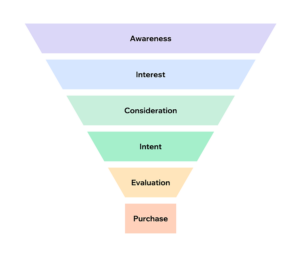
Stages of the Marketing Funnel
Research Is An Essential Part Of Making The Marketing Funnel Work Most Effectively. Before Even Working Through Its Different Stages You Should Make Sure That Your Understanding Of Your Target Audience And Your User Experiences Are Up To Date. Your Marketing Research Should Be Extensive And Comprehensive In Order To Apply It To The Funnel For The Most Impact. Refine Your Market Research, Both Quantitive And Qualitative.
While The Overall Framework Of The Marketing Funnel Has Remained Mostly Unchanged For More Than A Century, There Isn’t A Global Consensus On The Different Stages. Here, We’ll Discuss The Various Stages Represented In The Marketing Funnel Template Above.
These Stages Include
- 1. Awareness
- 2. Interest
- 3. Consideration
- 4. Intent
- 5. Evaluation
- 6. Purchase
01. Awareness
Awareness – Located At The Top Of The Marketing Funnel – Is The First Stage. This Is The Point Where Customers First Learn About Your Brand And It’s Where Lead Generation Takes Place.
To Build Awareness, Develop Targeted Marketing Campaigns That Are Geared Toward People Who May Need Your Product. Be Sure To Use Market Segmentation To Create Tailored Campaigns For Each Customer Type. Think About Writing Press Releases As Part Of This Step.
Then, Use Lead Capture Forms To Get Their Contact Information (Typically Their Email Address) So That You Can Continue Marketing To Them. This Is One Of The Most Important Lead Generation Strategies, As You’ll Be Using Their Contact Information To Reach Out To Them And Guide Them Through The Rest Of The Marketing Funnel.
02. Interest
Leads Who Show An Interest In Your Business Move Onto The Next Stage Of The Marketing Funnel, Aptly Known As Interest. At This Point, Lead Generation Turns Into Lead Nurturing As Brands Start To Establish A Connection With All The Contacts Gathered During The Previous Stage.
One Of The Most Effective Ways To Build Interest Is Through Email Marketing. This Allows You To Start Building Relationships With Leads By Reaching Out To Them Directly With Relevant, Branded Content.
03. Consideration
In The Consideration Stage Of The Marketing Funnel, The Consumer Is Evaluating The Different Methods Available To Address Their Needs. They Already Know About Your Offering And Are Familiar With Your Brand at this point. Now, It’s Your Job To Convince Them That A Product Like Yours Presents The Best Solution To Their Problems.
To Do This, Try Using Marketing Automation To Send Targeted Email Campaigns With Actionable Intent, Such As Free Trials And Sales Announcements. Another Popular Funnel Marketing Technique Is To Offer Them informative content, Such As Blog Posts And Webinars, That Addresses Their Needs While Guiding Them Toward Your Product.
04. Intent
Ever Left Something In Your Online Shopping Cart And Received An Email About It A Day Or Two After? That’s What Entering The Intent Stage Feels Like.
Prospective Customers (Known As Prospects) Move To The Intent Stage Once They Demonstrate A Clear Intent To Purchase A Product, Such As By Contacting A Customer Service Representative, Trying Out A Product Demo or Adding An Item To Their Shopping Cart. This Doesn’t Mean That They Are Going To Buy Right Away, But It Does Indicate That They Are Primed For The Purchase.
With That In Mind, The Intent Stage Is The Time To Prove Why Your Offering Is The Number One Option For The Prospective Customer. You’ll Need To Target Them With Marketing Materials That Make A Strong Case For Why Your Product Is Better Than Your Competitors’.
05. Evaluation
The Evaluation Stage Of The Marketing Funnel Is Where Lead Nurture Meets Sales. Here, The Prospective Customer Is Making The Final Decision About Whether Or Not To Buy Your Product.
In This Stage, Marketing And Sales Teams Must Work Together To Convince Prospective Buyers To Take The Leap And Make A Purchase. Much Like The Previous Stage, The Focus Is Kept On Positioning Your Business’s Offering As The Ideal Choice.
Additional Representations of the Marketing Funnel
Additional Representations of the Marketing Funnel
The Marketing Funnel, Also Known As The Sales Funnel, Is A Visual Representation Of The Customer Journey From Awareness To Conversion. It Helps Businesses Understand The Stages A Potential Customer Goes Through Before Making A Purchase Or Taking A Desired Action. While The Traditional Funnel Includes Stages Like Awareness, Interest, Consideration, Intent And Purchase, There Are Several Alternative Representations Of The Marketing Funnel That Provide Different Perspectives On The Customer Journey.
AIDA Model
- Attention
Creating Awareness And Grabbing The Audience’s Attention.
- Interest
Generating Interest And Providing Valuable Information.
- Desire
Building Desire For The Product Or Service Through Benefits And Features.
- Action
Encouraging The Audience To Take A Specific Action, Such As Making A Purchase.
Flywheel Model:
- Attract
Attracting Potential Customers Through Various Channels.
- Engage
Engaging With Customers And Providing Excellent Experiences.
- Delight
Delighting Customers To Turn Them Into Promoters.
- Repeat
Encouraging Repeat Business And Referrals.
Hourglass Model:
- Awareness
Creating Awareness And Attracting Potential Customers.
- Consideration
Guiding Customers Through The Consideration Process.
- Conversion
Converting Leads Into Customers.
- Delight
Providing An Exceptional Customer Experience.
- Advocacy
Turning Satisfied Customers Into Advocates Who Refer Others.
Bowtie Model
- Acquisition
Attracting And Acquiring New Customers.
- Activation
Activating New Customers And Guiding Them Towards The Desired Action.
- Retention
Retaining Customers And Encouraging Repeat Business.
- Referral
Turning Satisfied Customers Into Advocates Who Refer Others.
Pirate Metrics (AARRR)
- Acquisition: Acquiring New Customers.
- Activation: Activating Customers And Providing Value.
- Retention: Retaining Customers And Fostering Long-Term Relationships.
- Referral: Encouraging Customers To Refer Others.
- Revenue: Generating Revenue From Customers.
Consumer Decision Journey
- Trigger: The Initial Need Or Trigger That Starts The Journey.
- Consider: Exploring Options And Gathering Information.
- Evaluate: Comparing Choices And Making A Decision.
- Buy: Making A Purchase.
- Experience: The Post-Purchase Experience, Which Influences Future Decisions.
Emotional Journey
- Excitement: Capturing Attention And Creating Excitement.
- Curiosity: Sparking Curiosity And Interest.
- Hope: Building Anticipation And Hope.
- Commitment: Establishing A Strong Desire To Take Action.
- Satisfaction: Fulfilling The Emotional Needs Of The Customer.
Trust Pyramid
- Awareness: Building Awareness And Credibility.
- Interest: Generating Interest And Showcasing Expertise.
- Trust: Establishing Trust Through Valuable Content And Interactions.
- Commitment: Gaining Commitment And Loyalty.
- Advocacy: Turning Loyal Customers Into Advocates.
These Alternative Representations Provide Different Lenses Through Which Businesses Can View The Customer Journey And Tailor Their Marketing Strategies Accordingly. Ultimately, The Choice Of Representation Depends On The Specific Goals, Target Audience And Nature Of The Business.
Nonlinear Marketing Funnel
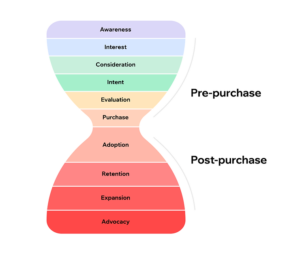
Nonlinear Marketing Funnel
The Marketing Funnel Template Above Represents The Nonlinear Marketing Funnel. While The Cone-Shaped Marketing Funnel Has Been The Default For Many Decades, Some Experts Argue That The Market Has Evolved Beyond Linear Buying Processes.
As A Result, Many Businesses Have Started To Leave Behind The Traditional Cone In Favor Of One Resembling A Bowtie Or Hourglass. This Type Of Marketing Funnel Aims To Tackle The Fifth And Last Stage Of Dewey’s Consumer Decision Processes: Post-Purchase Behavior.
The Upside-Down Cone Shape Starts With The Few Buyers Who Made A Purchase And Journeyed To The End Of The Traditional Marketing Funnel. From There, Businesses Look At The Post-Purchase Customer Journey, Taking Into Account Factors Such As Satisfaction, Testimonials And Feedback.
The Goal Of This New Funnel Approach Is To Create Strong Relationships With Customers, Not Only To Ensure They Don’t Move To Your Competitors’ Services, But Also So They’ll Become Repeat Buyers And Loyal Advocates Of Your Brand.
While There Isn’t A Consensus About The Different Stages Of The Nonlinear Marketing Funnel, It Nonetheless Remains A Valuable Way To Gauge Consumer Behavior And Optimize Your Marketing Efforts. Whichever Model Of The Marketing Funnel You Use, The Most Important Factor Is That Your Marketing Plan Strongly Aligns With Each Stage Of The Buyer’s Journey.
Specific Marketing Methods To Implement The Marketing Funnel
There Are Many Marketing Strategies That Can Be Applied To Different Stages Of The Marketing Funnel In Order To Help It Elevate Your Marketing Efforts. Here Are Some Of The Most Popular Or Impactful, In No Particular Order.
• Content Marketing As Well As User-Generated Content
• SEO
• Online And Traditional Advertising
• Direct Marketing
• Loyalty Programs, Including Coupons And Discounts
• Social Media Marketing And Channels
Testing And The Marketing Funnel
Testing Is An Essential Part Of The Marketing Funnel And It Should Take Place Through Every Stage Of The Funnel. Here Are A Few Examples Of What That Could Look Like
1.Awareness Stage
At This Stage, Customers Should Be Becoming
Aware Of Your Product Or Service. Track Metrics Such As Website Traffic, Social
Media Engagement And Email Open Rates To Understand This Better.
2. Consideration Stage
Customers Are Considering Your Product Or Service And Comparing It To Competitors. Test The Effectiveness Of Your Marketing Efforts At This Specific Stage Of The Funnel By Tracking Metrics Such As Click-Through Rates, Conversion Rates And Bounce Rates.
3.Decision-Making Stage
If They’ve Reached This Stage, Customers Are Making A Final Decision To Purchase Your Product Or Service. At This Stage, You’ll Need To Focus On Metrics Such As Sales Conversion Rates And Return On Investment, As Well As Customer Acquisition Cost.
To Effectively Test The Marketing Funnel, It’s Important To Use Different Types Of Testing, Including A/B Testing, Multivariate Testing And User Testing.
A/B Testing Involves Testing Two Versions Of A Marketing Element To See Which One Performs Better, Such As Testing Two Different Headlines In An Email Campaign.
Multivariate Testing Involves Testing Multiple Elements At Once To See Which Combination Is Most Effective, Such As Testing Different Images And Headlines In A Website Landing Page. User Testing Involves Gathering Feedback From Actual Customers To See How They Interact With Your Product Or Service.
Overall, Testing Is A Critical Component Of The Marketing Funnel, Helping You To Identify What Works And What Doesn’t, While Being Able To Make Data-Driven Decisions To Improve Your Marketing Strategies And Increase Sales.
Https://Mdzaka.Com
The Marketing Funnel Is A Conceptual Framework That Represents The Customer Journey From Initial Awareness Of A Product Or Service To The Final Purchase. It Is Used By Marketers To Understand And Guide Their Efforts At Each Stage Of The Customer’s Decision-Making Process. The Traditional Marketing Funnel Consists Of Several Stages, Including Awareness, Interest, Consideration, Intent And Finally, The Purchase. However, With The Changing Landscape Of Consumer Behavior, The Linear Marketing Funnel Has Evolved Into A Nonlinear Model That Accommodates Multiple Touchpoints And Interactions.
Stages Of The Marketing Funnel
A. Awareness
This Is The Stage Where Potential Customers Become Aware Of Your Brand Or Product. It Involves Generating Brand Awareness And Capturing The Attention Of Your Target Audience Through Various Marketing Channels.
B. Interest
In This Stage, Customers Develop An Interest In Your Brand Or Product. They May Seek More Information, Engage With Your Content or Sign Up For Newsletters. It Is Crucial To Provide Valuable And Relevant Information To Nurture Their Interest.
C. Consideration
Customers Actively Evaluate Your Brand Or Product at this Stage, Comparing It With Competitors. They May Seek Reviews, Testimonials or Demonstrations. It Is Important To Highlight The Unique Value Proposition And Benefits To Sway Them Towards Your Offering.
D. Intent
Customers Have A Strong Intention To Purchase in this stage. They May Be Comparing Prices, Looking For Promotions or Seeking Additional Incentives. Providing Clear Purchasing Options And Addressing Any Concerns Is Vital To Convert Intent Into A Purchase.
E. Purchase
The Final Stage Of The Marketing Funnel Is The Actual Purchase. This Is Where Customers Complete The Transaction And Become Paying Customers. It Is Essential To Provide A Seamless And Positive Buying Experience To Encourage Repeat Purchases And Brand Loyalty.
Nonlinear Marketing Funnel:
The Nonlinear Marketing Funnel Acknowledges That Customers May Interact With A Brand At Differ nel At Any Stage And Move Back And Forth Between Stages. This Model Emphasizes The Importance Of Providing A Consistent Brand Experience Across Multiple Channels, Including Social Media, Websites, Search Engines, Email Marketing And More.
The Nonlinear Marketing Funnel Also Recognizes The Role Of Customer Advocacy And Word-Of-Mouth Marketing. Satisfied Customers Can Become Brand Advocates And Influencers, Amplifying Brand Reach And Attracting New Customers.
Benefits Of The Marketing Funnel
A. Understanding Customer Behavior
The Marketing Funnel Helps Marketers Understand Customer Behavior And Decision-Making Patterns. It Provides Insights Into The Customer Journey, Allowing Businesses To Tailor Their Marketing Strategies Accordingly.
B. Targeted Marketing Efforts
By Identifying Each Stage Of The Marketing Funnel, Businesses Can Create Targeted Marketing Campaigns And Messages That Resonate With Customers At Different Stages Of The Buying Process. This Improves The Efficiency And Effectiveness Of Marketing Efforts.
C. Improved Conversion Rates
The Marketing Funnel Allows Businesses To Identify Potential Bottlenecks Or Areas Of Improvement Within The Customer Journey. By Addressing These Pain Points, Businesses Can Optimize Their Conversion Rates And Increase Sales.
D. Customer Relationship Building
The Marketing Funnel Encourages Businesses To Nurture Relationships With Customers At Various Stages. By Providing Valuable Content, Personalized Experiences And Excellent Customer Service, Businesses Can Build Trust And Loyalty, Leading To Repeat Purchases And Brand Advocacy.
E. Data-Driven Decision Making
The Marketing Funnel Provides Measurable Metrics At Each Stage, Allowing Businesses To Track And Analyze Their Marketing Efforts. This Data-Driven Approach Helps Marketers Make Informed Decisions, Optimize Campaigns And Allocate Resources Effectively.
Conclusion
The Marketing Funnel Is A Conceptual Framework That Represents The Customer Journey From Initial Awareness Of A Product Or Service To The Final Purchase. It Is Used By Marketers To Understand And Guide Their Efforts At Each Stage Of The Customer’s Decision-Making Process.
More..
https://mdzaka.com/
https://mdzaka.com/what-is-pillar-page-types-of-pillar-pages-creating-an-effective-pillar-page/
Creating a Successful Digital Marketing Strategy, What is Marketing Strategy 2023-24
https://mdzaka.com/learn-about-leads-what-leads-are-how-much-is-it-important-for-businesses/
How to Create a Best Landing Page 2023-24
